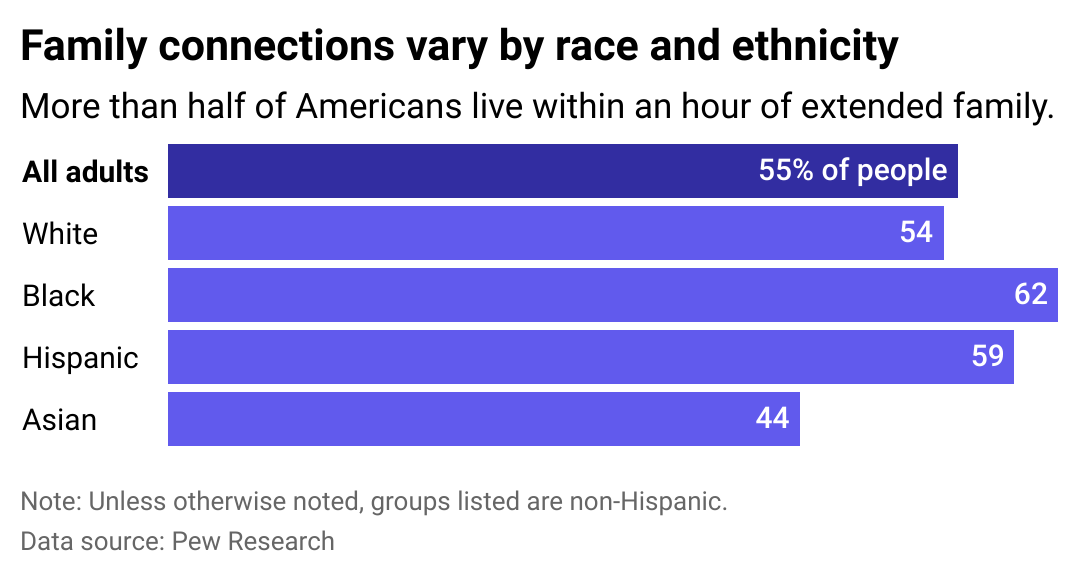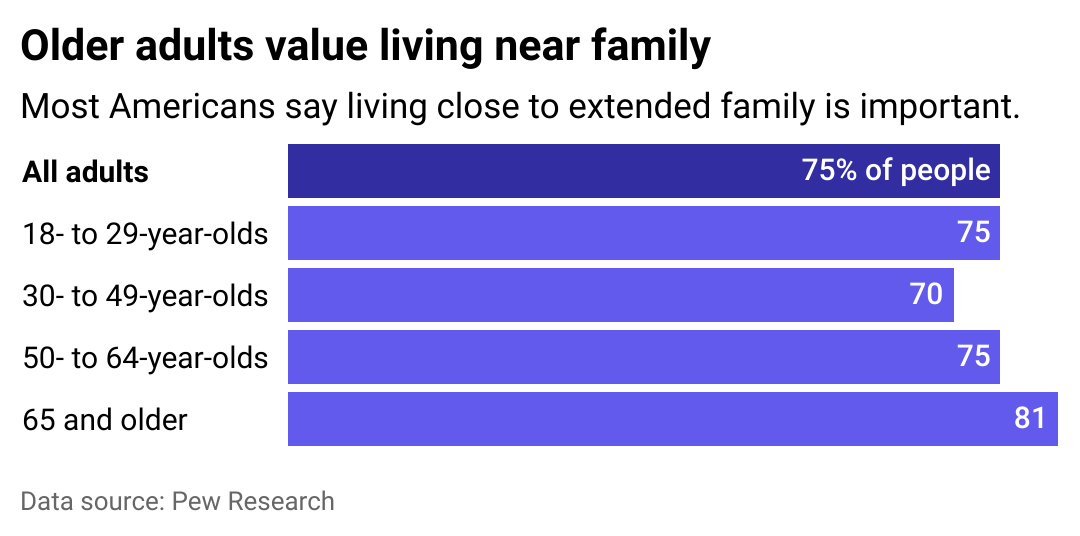Do Americans value living near extended family? It depends

Family matters to many. QMedic examined Pew Research survey data to see how different types of Americans value living near extended family.
– Monkey Business Images // Shutterstock
Jill Jaracz, Data Work By Elena Cox
There’s nothing like family for most Americans. According to Pew Research, 3 out of 4 adults in the U.S. place some importance on living near their extended family, and more than half of American adults live that reality.
QMedic examined 2022 survey data from Pew Research to see how Americans value living near extended family. Of those surveyed, about 55% said they live within an hour of some or most of their families, while the rest said they live near only a few or none.
Education and income play a part in the distance between family members. Pew found that over 3 in 5 adults with a high school education or less live near extended family, while just 2 in 5 adults with a postgraduate degree do. The higher a person’s income, the more likely they live farther away from family. About 27% of adults with higher incomes (those who make roughly $125,900 per year or more) don’t live near their families, and just 16% of adults with lower incomes (those who make roughly less than $42,000 per year) don’t.
Some families don’t just live near each other; they live together. Multigenerational households—three or more generations living under the same roof—are also increasing, according to the Census Bureau. Between the 2010 and 2020 censuses, multigenerational households grew nearly 18%, making up roughly 1 in 14 family households. While growing in number, multigenerational households are more common in the South, Southwest, California, Alaska, and Hawaii.
![]()

QMedic
Some groups are more likely to live near family
Looking more closely at race and ethnicity, Black and Hispanic Americans are more likely to stay closer to home compared to white Americans.
To Black Americans, extended family is a crucial network and source of social support, according to a 2021 brief by Child Trends. The brief notes that these extended family networks act as a “buffer for some of the negative impacts of structural and institutional racism experienced by Black families.”
Familism, or the tendency to value family obligation and physical closeness of extended family units, is also prevalent among Hispanic Americans. A 2022 analysis by the American Psychological Association’s PsycNet found that for Hispanic people familism is associated with positive future outcomes.
Black young adults typically live within 130 miles from home, versus 190 miles for white young adults. Hispanic young adults typically live within 144 miles of their family home.
While Asians are less likely to live near extended family, Pew notes that this could be because 75% of Asian American adults were born outside of the U.S. and may have most of their extended family in their country of origin.

QMedic
Importance of living near relative varies by age
Older adults, aged 65 and up, value living near extended family more than all adult groups. More than half of adults aged 65 and older develop disabilities and illnesses requiring care. Living near adult children or other extended family allows this group to maintain the autonomy and social connections that are key to their well-being.
This helps older adults age in place, or stay in their own home or a home setting instead of a care facility.
Story editing by Jeff Inglis and Kelly Glass. Copy editing by Tim Bruns.
This story originally appeared on QMedic and was produced and
distributed in partnership with Stacker Studio.
Do Americans value living near extended family? It depends
#Americans #living #extended #family #depends





